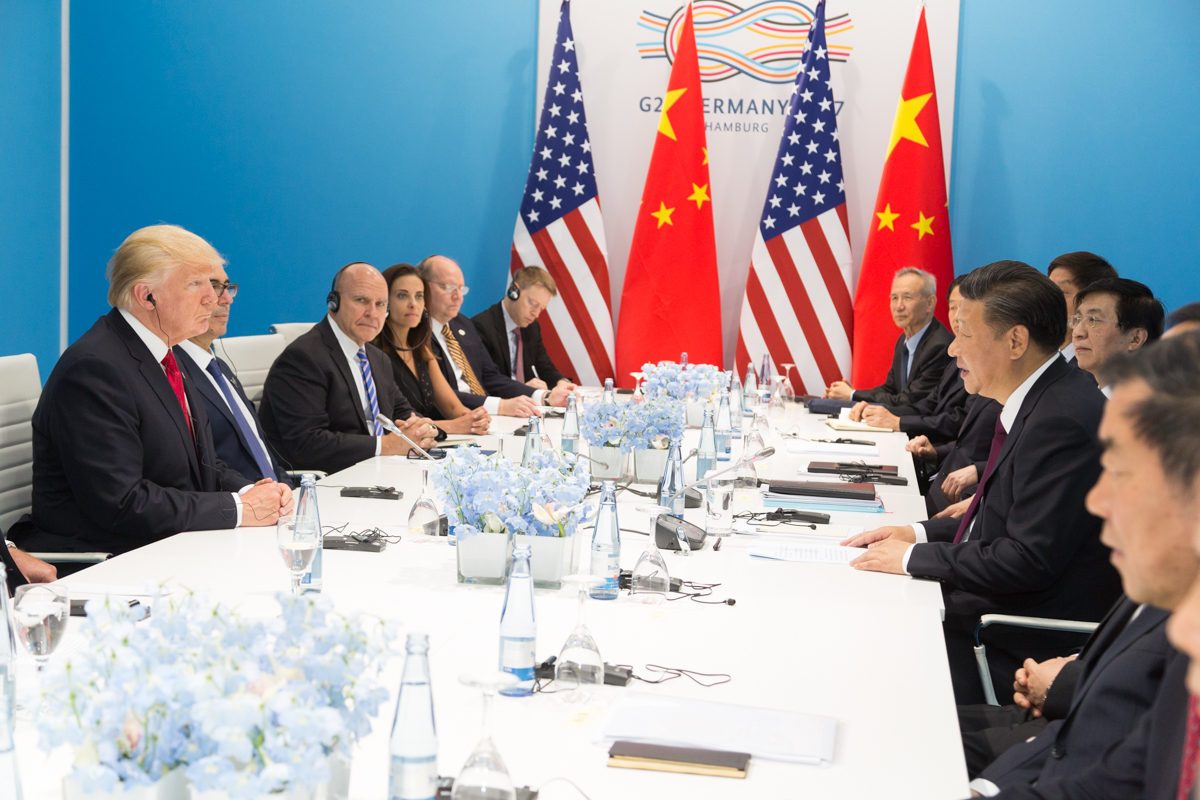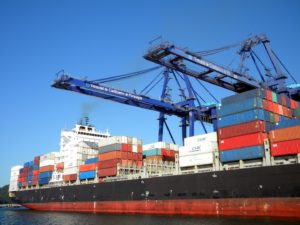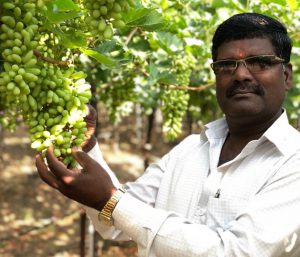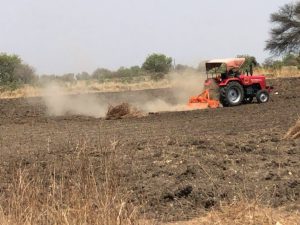The latest round of tariff hikes in the ongoing US-China trade war could have far-reaching impacts not only for big soy exporters Brazil and Argentina but throughout Latin America. The region’s initial opportunism is giving way to fears over instability and slower global growth.
On June 1 China suspended purchasing US soy in an escalation of the trade spat. The world’s largest buyer will look largely to Brazil to meet demand in a shift that could impact South American forests as the risk of protracted tensions bites.
5.8%
Mexico's estimated growth in exports since the trade war began
After a year of tit-for-tat tariffs, the impacts on Latin American countries are starting to sink in. A report from the United National Conference on Trade and Development (UNCTAD) estimated a growth in exports for several countries in the region, including Mexico (5.8%), Brazil, (3.8%) and Argentina (2.4%).
Yet, as some hope to capitalise, others foresee doomsday. Few are willing to predict how long the trade spat will last, or its effects linger.
“It generates insecurity, in general. That’s the thing,” said Lucilio Alves, from the Center of Advanced Studies in Applied Economics (Cepea), at the University of São Paulo. “This makes new investments harder.”
Deforestation risk
Last March, a group of scientists warned that the US-China trade war could cause a devastating spike in deforestation in Brazil, as the country tried to absorb Chinese soy demand.
“We forecast that a surge of tropical deforestation could occur as a result of the fresh demand being placed on China’s other major suppliers,” they wrote in an article in Nature, predicting Brazil could be pushed to expand production in up to 13 million hectares.
“We urge the US and China to adjust their trading arrangements immediately to avoid this catastrophe.”
A little over a month later, Brazil’s National Confederation of Industries celebrated the extra US$8 billion in revenues that the trade war brought in 2018. “A trade war isn’t good or advised to any country in the medium to long term, but, in the short term, Brazil has benefited,” the institution said in a press release.
if there is an extremely lucrative crop, it could be that at first there is substitution, and, in a second phase, there is dislocation to new areas
Brazil expects the trade war to positively impact its beef and chicken exports, but of the US$8 billion in new exports, soy accounts for $7 billion.
So far, there is no evidence that increased soy exports have caused greater deforestation. Given the uncertainty around how long this demand surge will last, most Brazilian farmers have opted to convert land used for other crops such as corn and sugarcane, rather than expand, Alves said.
“[Substituting crops] is certainly the cheapest and quickest way to do it,” he said. “Now, clearly, if there is an extremely lucrative crop, it could be that at first there is substitution, and, in a second phase, there is dislocation [to new areas].”
Long-term fears
According to Richard Fuchs, one of the authors of the Nature study, the more protracted the trade conflict, the higher the risk of land use change.
“If this is going to last long term, there is a clear threat of deforestation,” he said.
In the event that China refuses to import a single ounce of US soy in the future and looks only to Brazil to replace it, to meet demand production would have to increase by 39%, according to Fuchs’ study.
A lot of trust that goes into this relationship is now destroyed
This would mean millions of hectares of new planted area in a range of nations making up the shortfall, among them Brazil, Argentina, Paraguay, Uruguay and China itself, the study said.
The concern is that this pressure will lead to deforestation in the Brazilian Cerrado, a vast tropical savanna and the biome worst hit by soy expansion. This is largely because of slack regulations about how much native vegetation can be legally destroyed.
Yet, given President Bolsonaro’s attempts to dismantle environmental laws and enforcement, the legally better protected Amazon could also suffer.
The trade dispute may do more than temporarily shift production and damage the relationship between the world’s two largest economies. Fuchs recalls the 1980 US embargo on the Soviet Union, which pushed soy demand towards Brazil – where it stayed long after political tensions were resolved.
“A lot of trust that goes into this relationship is now destroyed,” he said.
Alves, from Cepea, points out that China needs diverse suppliers: “For China to depend on a single country doesn’t sound like an adequate strategy.”
Regional economic instability
While the trade war presents an opportunity for some countries to export more goods to both China and the US, not all are ready to take advantage. The UNCTAD report predicts that exports of Mexican manufactures could grow, as some assembly lines might relocate there from China.
However, Mexico could struggle to attract the necessary investment to make this happen, according to Enrique Dussel Peters, coordinator of the China-Latin America Academic Network.
“Mexico should have a clear and detailed strategy that focuses on these firms, which has so far not happened.”
Colombia is also hoping to seize the opportunity to go back to exporting manufactured goods to the US market, long crowded by cheaper Chinese alternatives.
But Colombians also worry that Chinese products designed for the US will be dumped in Latin America at prices the national manufacturing industries can’t compete with, according to national news outlet El Tiempo.
A trade war isn’t good for anyone, including Argentina. It creates a lot of volatility
Even as some exports grow, the trade war’s profitability for Latin America is questionable. Uncertainty erodes the global economy and fuels currency instability. This hurts farmers who import fertilizers and machinery in order to produce and sell commodities because fluctuations in currency exchanges can eat into profits over time.
Despite a record harvest, Argentina is expecting a loss of income between US$1 billion and $3 billion this year because of the trade war denting soy prices across the globe, according to a recent report. Soy prices are now near a 10-year low.
Did you know...?
Argentina sells around 85% of its soy to China
The government estimates that this year’s harvest will yield 145 million tonnes of soy, 44% higher than last year. The initial hope was that this would translate into US$16.2 billion, but that will now be substantially lower. Argentina sells annually around 85% of its soy production to China.
“A trade war isn’t good for anyone, including Argentina. It creates a lot of volatility,” Marcelo Elizondo, trade expert at consultancy DNI, said. “China’s economy will likely slow down, meaning it will reduce its imports. That combines with lower soy prices to reduce the country’s income.”
Across the Rio de la Plata basin, Uruguay is fearing similar consequences. Producers argue that selling their crops at below US$300 per tonne means not making a profit. The country is aso expecting a record harvest, after severe drought and lower production last year.
“Soy is one of our main exporting products but it’s experiencing a contradiction,” Danilo Astori, Uruguay’s Economy Minister, said. “The harvest is showing an impressive quality but there’s a problem. Prices are too low for the needs of the Uruguayan farmers and that is directly linked to the trade war between the US and China.”
Grape expectations
Chile was initially optimistic about the trade war benefitting its wine sector, as China introduced a 15% tariff on US wines. Chile is the fourth largest wine exporter in the world and 16% is destined for China, some 8.1 million cases.
But since the dispute has ratcheted up, the optimism has gone.
“We may benefit in the short-term by the problems the US faces in selling its wines to China. But I see that complicated [in] the long term,” said Aurelio Montes, head of Chile’s national wine association.
“A US-China conflict could lead to lower growth rates across the globe, including in China, and consequently lower wine consumption.”








